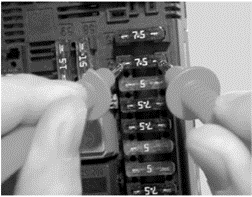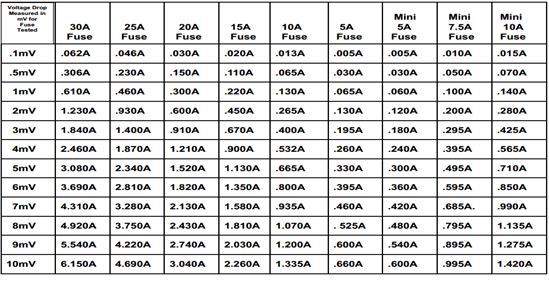
What’s Draining Your Battery? Find Out with a Parasitic Draw Test

A good battery shouldn’t lose its charge overnight or even after sitting a few days. If it does, the problem may be the battery can no longer hold a charge, the alternator isn’t working, or the battery terminals are corroded. But if the terminals are clean and tight, the battery is fairly new and the charging system warning light is not on, there’s probably an electrical component or wiring issue causing an electrical drain (or parasitic draw) on the battery. There are a couple of ways to pinpoint which circuit, component or module is causing the battery to discharge.
The original method of testing for a parasitic draw involved connecting a multimeter, set to measure amps, in a series between the negative battery terminal and the disconnected negative battery cable. Next, you would pull fuses one by one until the amperage draw on the meter dropped. Once you had found the circuit responsible for the draw, you could further diagnose that individual circuit. The potential problem with this method on newer vehicles is you may inadvertently "wake up" a sleeping module by pulling and re-installing a fuse. This can make the testing process extremely time consuming by having to wait for the modules in the circuit to go back into "sleep” mode.
A method that is gaining popularity is to measure the voltage drop across fuses to identify circuits that are live when they should not be. NOTE: Any conductor that has current moving through it has a certain amount of resistance and therefore will “drop” voltage relative to that resistance and the amount of current flowing. The voltage drop we would expect to see across a fuse is small, since its resistance is small, but it can still be measured in millivolts. A circuit that is not live should have no voltage dropping across it. A small parasitic draw under 1 Amp will take a few days to drain a battery; over 1 Amp could drain a battery overnight.
Armed with this information, we can test for a voltage drop across fuses to identify those circuits that are live and causing your vehicle’s battery to drain.
Before you start testing, there are a few things you need to know.
- Verify that the battery is fully charged.
- Be aware that some circuits will stay live for a while until the modules that supply power to them go into "sleep" mode. This time varies depending on the manufacturer and the module, but it can be anywhere from 30 to 120 minutes. It’s important to be patient with this step. You must wait until all the modules go to sleep.
- If you want the doors open, be sure to tape down the dome light switches and/or close the door latches. The same goes for glove box, under hood and trunk light switches.
- If the vehicle uses a transponder key or fob, make sure that they are moved far away from the vehicle.
- Wait for all the interior lights to go out (examples: lights on knobs, dome light, PRNDL illumination on the shifter or under dash lights).
Once the vehicle is asleep, you can start testing. Place the leads of your voltmeter across the terminals of a fuse and look for a millivolt reading (see image).
We are looking for circuits that are drawing over .050 Amps (50 milliamps). You can use the chart below to calculate the amperage draw based on the millivolt reading and the fuse’s resistance.
Let’s look at an example of how to use the chart to determine the current draw of the circuit you’re evaluating.
With your multimeter set to millivolts, you find 0.5 mV across a fuse under the dash. The fuse has a “10” printed on it, which means it’s a 10Amp fuse. Looking at the chart, you see that a 0.5mV drop on a 10Amp fuse equals a .065 Amp current draw. Our upper limit for a current draw is .050 Amps, so that circuit would be considered live. Check all the fuses inside the vehicle and under the hood as multiple circuits could be involved. Once you’ve identified which circuit is draining your battery, you can proceed with disconnecting sections of the harness or components in that circuit to pinpoint exactly what’s causing of the draw. For instance, say you find that the circuit causing the draw has a driver’s heated seat in it. You unplug the heated seat relay and the millivolt reading across the fuse drops to “0." The relay is the probable cause of the electrical draw. Replace it and retest.
Having an accurate wiring diagram and the locations of connectors, relays and modules is extremely helpful when performing this test. ALLDATAdiy is an excellent source for that information.
Check out What Causes Parasitic Drain on Your Car Battery? for more helpful tips.
Not an ALLDATAdiy customer? Learn how a subscription could help you. ALLDATAdiy provides access to repair information on over 44,000 engine-specific vehicles, find yours. Return to see more DIY Helpful Tips.








